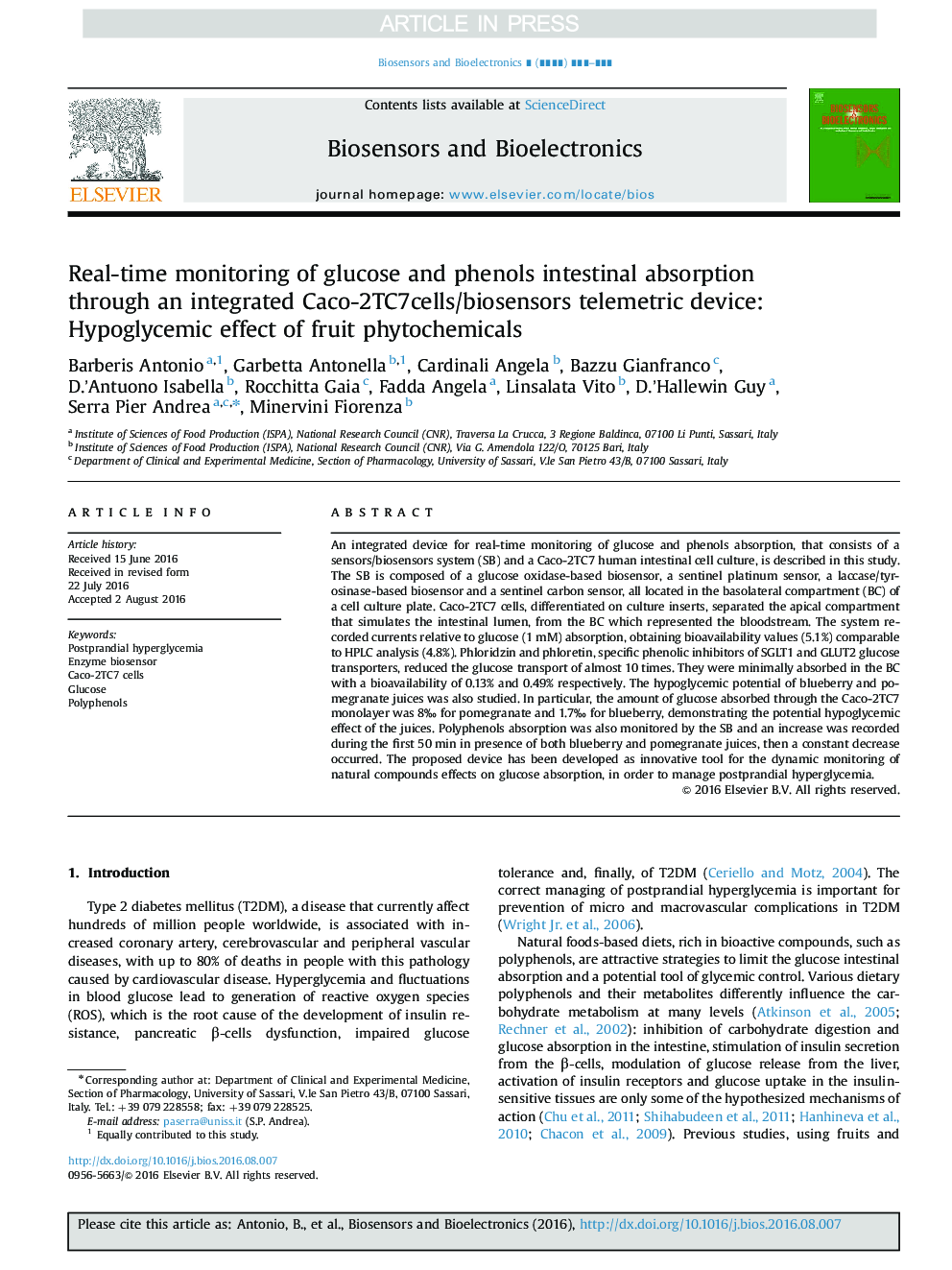| Article ID | Journal | Published Year | Pages | File Type |
|---|---|---|---|---|
| 5031409 | Biosensors and Bioelectronics | 2017 | 8 Pages |
Abstract
An integrated device for real-time monitoring of glucose and phenols absorption, that consists of a sensors/biosensors system (SB) and a Caco-2TC7 human intestinal cell culture, is described in this study. The SB is composed of a glucose oxidase-based biosensor, a sentinel platinum sensor, a laccase/tyrosinase-based biosensor and a sentinel carbon sensor, all located in the basolateral compartment (BC) of a cell culture plate. Caco-2TC7 cells, differentiated on culture inserts, separated the apical compartment that simulates the intestinal lumen, from the BC which represented the bloodstream. The system recorded currents relative to glucose (1Â mM) absorption, obtaining bioavailability values (5.1%) comparable to HPLC analysis (4.8%). Phloridzin and phloretin, specific phenolic inhibitors of SGLT1 and GLUT2 glucose transporters, reduced the glucose transport of almost 10 times. They were minimally absorbed in the BC with a bioavailability of 0.13% and 0.49% respectively. The hypoglycemic potential of blueberry and pomegranate juices was also studied. In particular, the amount of glucose absorbed through the Caco-2TC7 monolayer was 8â° for pomegranate and 1.7â° for blueberry, demonstrating the potential hypoglycemic effect of the juices. Polyphenols absorption was also monitored by the SB and an increase was recorded during the first 50Â min in presence of both blueberry and pomegranate juices, then a constant decrease occurred. The proposed device has been developed as innovative tool for the dynamic monitoring of natural compounds effects on glucose absorption, in order to manage postprandial hyperglycemia.
Related Topics
Physical Sciences and Engineering
Chemistry
Analytical Chemistry
Authors
Antonio Barberis, Antonella Garbetta, Angela Cardinali, Gianfranco Bazzu, Isabella D'Antuono, Gaia Rocchitta, Angela Fadda, Vito Linsalata, Guy D'Hallewin, Pier Andrea Serra, Fiorenza Minervini,
